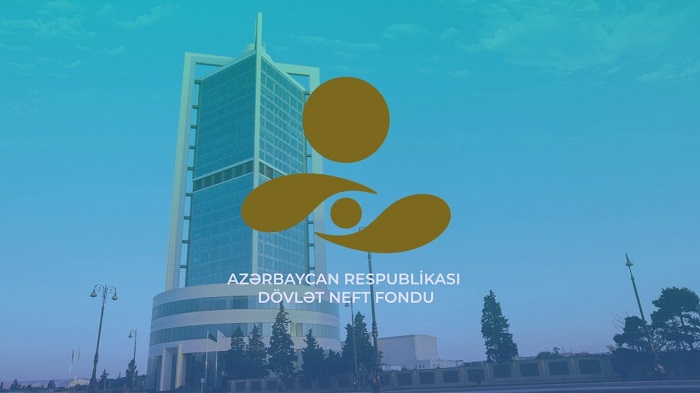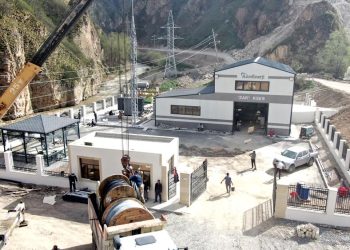Azerbaijan’s decision to suspend development work on its planned 12bn m3/yr oil, gas, refining and petrochemical project highlights the complexity of getting the gas balance right in the Caucasus both now and in the long-term.
 While the long-term future for gas supplies from indigenous sources looks promising, right now there are acute shortages forcing the region to look realistically at imports from Russia and optimistically at imports from Iran.
While the long-term future for gas supplies from indigenous sources looks promising, right now there are acute shortages forcing the region to look realistically at imports from Russia and optimistically at imports from Iran.
In the long-term, should energy prices recover, the state oil company of Azerbaijan (Socar) intends to proceed with developing the massive $7bn oil and gas refining and petrochemical complex (OGPC) planned to be built alongside the existing oil and gas terminal at Sangachal.
But in the short-term, it’s a very different picture, with the region in general, and Azerbaijan in particular, facing immediate gas shortage problems. These problems were epitomised when Socar’s vice president for strategic development Tofig Gahramanov announced on February 19 that “active work on the Socar OGPC project has been temporarily frozen.”
The problem for the Azerbaijani authorities, and particularly for Socar, is that even though the energy minister Natiq Aliev has said that overall output will increase modestly from 29.1bn m3 in 2015 to 29.3bn m3 in 2016, a fall in Socar’s own production means that existing export commitments risk leaving it short of gas for domestic use.
Azerbaijan has three main sources of gas. There is gas from the giant offshore BP-operated Shah Deniz field, but most of this is contracted for export with 6.6bn m3/yr of existing output from Shah Deniz Phase I (SD1) being delivered to Turkey, and around 0.8 m3/yr delivered to Georgia. With 2015 production totalling 9.9bn m3, this leaves around 2.5bn m3 available for transfer to Socar for domestic consumption. According to Aliev, 2016 is expected to see SD1 output rise to 10.1bn m3, although BP’s country head Gordon Birrell has said he expects output to remain essentially unchanged at around 10bn m3/yr.
Then there is the Azeri Chirag Guneshli (ACG) oil field. This produced 12.3bn m3 of associated gas in 2015, and is expected to produce 12.9bn m3 in 2016, but the gas is overwhelmingly required for reinjection to maintain oil production levels; last year only 3.3bn m3 were transferred to Socar for domestic consumption. With the ACG field facing increasing production constraints, the extra gas produced by the field in 2016 is likely to be used primarily for reinjection.
Finally there is the gas that Socar produces itself. This amounted to just under 6.9bn m3 last year but Aliev has said that it is expected to fall to 6.3bn m3 this year. Moreover, Socar is committed to supplying Georgia with an additional 0.4bn m3/yr from its own resources.
This means that so long as Azerbaijan’s domestic demand remains at around 10-11bn m3/yr, Socar’s ability to supply it remains on a knife edge. It is no longer sufficient to meet Azerbaijani domestic demand; hence the widespread speculation concerning imports from Russia.
In September 2015, AzMeCo, an Azerbaijani methane company, agreed to buy 2bn m3/yr of gas from Gazprom Export. Following that announcement, in December 2015, Gazprom said that talks with Socar CEO Rovnag Abdullaev had included discussions on a possible increase in Gazprom supplies to Azerbaijan.
Subsequent reports that Socar itself was planning to buy Russian gas prompted an immediate rebuttal from Socar’s vice president for investments and marketing, Elshad Nasirov, that Socar had no need to import gas from anywhere, but that any other Azerbaijani company – Nasirov specifically mentioned AzMeCo and state-owned electricity company Azerenergy – who intended to purchase gas from Gazprom could use Socar infrastructure to secure their imports.
So while Azerbaijan was as recently as 2013 exporting some 1.4bn m3 of gas to Russia – and with agreements to take that level to 3bn m3/yr – the situation now is that Azerbaijan needs Russian gas to fuel its petrochemicals industry and perhaps its power plants, even if Socar does not require it to meet the needs of other Azerbaijani customers.
Nor can Azerbaijan expect to secure a solution from the giant $22bn upstream development of the giant Shah Deniz Phase II (SD2) programme. While this phase is set to boost the field’s output by a stunning 16bn m3/yr, all of it is already committed for export, with 6 m3/yr going to Turkey and 10bn m3/yr headed for European customers beyond Turkey, notably Italy.
This means that for Azerbaijan to revive its ambitious plans for gas-fuelled petrochemicals development, it needs to bring new gas fields on stream, notably the giant Absheron field.
France’s Total, which is the operator at Absheron, has presented the Azerbaijani authorities with an outline plan under which production could start as early as 2021. But this is overly ambitious, both in terms of a compressed timetable and because of the lack of rigs available for drilling production wells. With no final investment decision for Absheron expected until 2017 at the earliest, it seems highly unlikely that the field will start significant production much before 2025.
In the meantime, of course, this will encourage Socar in its revived efforts to see whether it can secure the input of gas from Turkmenistan via a trans-Caspian gas pipeline.
Georgia’s Import Considerations
Then there is Georgia. Georgia’s energy minister Kakha Kaladze acknowledged on February 8 what had, in fact, long been presumed: that he was negotiating with Gazprom on importing gas. But neither on that date, nor on February 19 when he spoke of signing “soon” a memorandum of understanding with Gazprom, did he say how much gas Georgia expected to import.
Because of political anxieties about reliance on Russian gas – the Georgians remember not only the 2008 war with Russia but also the January 2006 cut-off of Russian gas during the coldest winter for 20 years – there has been considerable public concern about Kaladze’s persistence in pursuing a revived relationship with Gazprom.
In recent years, Gazprom has had to rely on Georgia as a transit route for its regular gas deliveries to Armenia and has paid the Georgians a transit fee in the form of gas deliveries. Now Gazprom wants to pay a flat fee to Georgia for transit – and for Georgia to pay commercial terms for both existing gas flows and for increases in gas supplies.
As a result, Kaladze has suggested Georgia might import gas from Iran, as it did in the wake of the 2006 cut-off. While the minister suggested one import route that would pose few problems, namely through Azerbaijan, he also suggested gas might transit through Armenia.
Iran does indeed supply Armenia with gas, but Russia put pressure on Armenia to limit the size of that pipeline so that Iran would never be able to deliver more than about one-quarter of Armenia’s domestic requirements, let alone have anything spare for onward delivery to other neighbours, notably Georgia.
Meanwhile, however, Tbilisi has secured the agreement of Azerbaijan to adjust its existing agreement under which 60% of promised gas deliveries take place in the wintry half of the year and 40% in the summery half, to a 70-30% split. In effect, this will raise Azerbaijani deliveries over a 90-day period from around 385mn m3 to 450mn m3 – not a tremendous amount but nonetheless contributing to the squeeze on Azerbaijani resources.
There are, still, ambitious suggestions for a major readjustment of regional gas flows. These include the long-standing proposals for a Trans-Caspian Gas Pipeline to enable Turkmen gas to access regional markets and, indeed, to fulfil a 1999 contract to supply as much as 16bn m³/yr to Turkey (and also deliver a further 14bn m³/yr to European countries beyond Turkey).
They also include proposals for large volumes of Iranian gas to access the TransAnatolia Pipeline project across Turkey via Azerbaijan, although it would be much easier for Iran and Tanap’s promoters to build a direct connection alongside the existing Iran-Turkey gas line.
But the problem remains that long-term ambitions for major new external supplies will not resolve the immediate issue: how to secure domestic demand in Azerbaijan and to provide for peak winter requirements in Georgia. Right now, Gazprom seems to be the only game in town.
John Roberts
Chief Analyst, Natural Gas Europe











